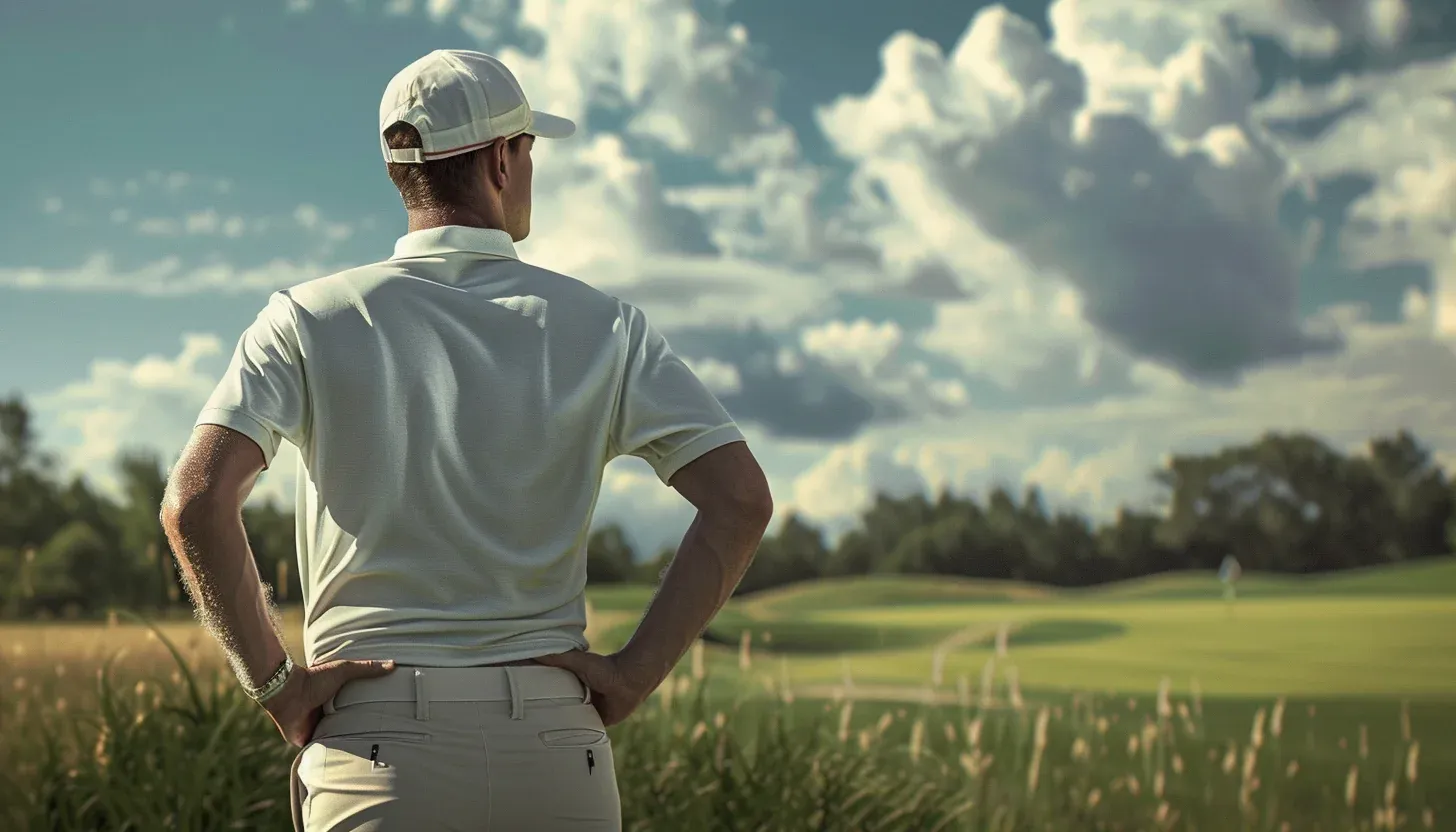Fixing a Slice: Essential Tips for Beginner Golfers
Dealing with a slice is frustrating, but fixing it might be easier than you think.

It's been said that 90% of golfers struggle with the dreaded "slice". It can be one of the most frustrating issues for golfers of all skill levels and occurs when the ball curves dramatically from left to right for right-handed golfers (or right to left for left-handed golfers), resulting in a major loss of distance and accuracy. Struggling with a slice often leads to higher scores, especially when the slice is occurring off the tee and leading to lost balls. Understanding the root causes of a slice and implementing corrective measures can transform your game and rapidly lower scores.
Why Am I Slicing the Golf Ball?
A slice happens when your clubface is excessively open relative to your swing path at impact, making the ball spin and curve off to the right (for right-handed golfers). The understanding of ball flight physics has evolved to show that the direction your clubface points at impact decides where the ball starts, and the difference between your swing path and the clubface angle, known as the face-to-path relationship, determines how much the ball curves. This is different from the old thinking that the swing path was the main thing controlling the ball's direction.
For example, if your swing path is perfectly straight (0.0 path) but your clubface is open by 1 degree, the ball will start slightly to the right and curve further right. Over a distance of 200 yards, this can cause the ball to end up approximately 10-15 yards to the right of your target. If the clubface is open by 3 degrees, the ball could end up 30-45 yards to the right of the target. The slice can get out of control very quickly when an open face is combined with a negative swing path, commonly found in beginner golfers who suffer from an “over the top” move through transition.
The key takeaway is that the larger the face-to-path angle, the more the ball will curve. A small face-to-path difference can result in a slight fade, which might be desirable, but as that difference grows, the fade turns into a slice. To fix a slice, you need to work on reducing the face-to-path angle by squaring up your clubface at impact and ensuring your swing path supports a straighter ball flight. This can be done by adjusting your grip, improving your wrist action, and practicing specific drills. Understanding the relationship between swing path and clubface angle makes it easier to diagnose and correct your slice, helping you hit straighter, more consistent shots.

Tips for Fixing Your Slice
Grip Adjustments
- Adjust Your Grip: Many beginners have a weak grip, which means their hands are turned too far to the left on the club (for right-handed golfers). Rotate your hands slightly to the right so you can see two to three knuckles on your left hand when you look down. This stronger grip helps keep the clubface square at impact, reducing the positive face to path angle that causes a slice.
Stance and Alignment
- Alignment: Ensure your feet, hips, and shoulders are aligned parallel to your target line. Proper alignment helps you swing on a more consistent path, reducing the chances of an out-to-in swing that can cause a slice.
- Ball Position: Position the ball slightly forward in your stance. Placing the ball too far back can lead to an out-to-in swing path, increasing the chances of an open clubface at impact. When the ball is placed forward, the clubface has more time to square up before impact. This longer travel time allows for a more natural closing of the clubface, helping you hit the ball straighter.
- Weight Distribution: Distribute your weight evenly between both feet, and maintain a slight knee bend for balance and stability. As you swing, shift your weight smoothly from your back foot to your front foot, which aids in maintaining a proper swing path and clubface angle.
Swing Path Adjustments
- Visualization: Picture a line extending from the ball directly toward your target. Try to swing along this line while keeping your clubface square to it. This mental image can help you maintain the correct swing path.
- Shoulder Alignment: Ensure your shoulders are slightly closed at address, pointing a bit right of your target (for right-handed golfers). This setup encourages an in-to-out swing path naturally.
- Hand Position: At the top of your backswing, focus on keeping your hands closer to your body during the downswing. This helps guide the club into an in-to-out path as you approach impact.
Clubface Control
- Grip Pressure: Ensure you are holding the club with a firm but relaxed grip. Too tight a grip can hinder the natural rotation of your hands and wrists, leading to an open clubface at impact.
- Wrist Rotation: Focus on the proper rotation of your wrists through the swing. Practice the "release" of the club by allowing your wrists to naturally rotate through impact, helping to square the clubface. Imagine shaking hands with the target as you follow through.
- Impact Awareness: Use impact tape or foot powder spray on the clubface to see where you’re making contact with the ball. This can help you adjust your swing to ensure the clubface is square at impact.
- Practice with Purpose: During practice, focus on hitting the ball with a square clubface. Try to feel the difference between an open and square clubface at impact. You can practice this by hitting short, controlled shots, gradually increasing the swing length as you get more comfortable.
Body Rotation
- Proper Turn: Ensure you are making a full shoulder turn on your backswing. Your left shoulder (for right-handed golfers) should turn under your chin. This helps create a solid foundation for your downswing.
- Weight Shift: Practice shifting your weight smoothly from your back foot to your front foot during the swing. Start your downswing by moving your hips towards the target with a slight “bump”, which can help prevent an over-the-top move that can lead to an out-to-in swing path.
- Balanced Finish: Aim for a balanced finish with your chest facing the target and your weight fully on your front foot. This ensures you have rotated your body properly through the swing.
- Drill for Rotation: A helpful drill is to place a club or alignment stick across your shoulders and practice rotating your upper body while keeping your lower body stable. This helps you feel the correct rotation and weight shift without the complication of hitting a ball.
Drills to Practice
- Towel Drill: Place a towel under your armpits and practice making swings without letting the towel drop. This helps maintain proper connection between your arms and body, promoting a more in-to-out swing path.
- Alignment Stick Drill: Place an alignment stick on the ground parallel to your target line and another stick outside your ball, pointing towards your body. This helps you visualize and practice an in-to-out swing path, ensuring your clubface stays square.
- Tee or Headcover Drill: Place a tee or headcover just outside the target line, a few inches in front of the ball. This visual aid encourages you to swing from the inside and avoid an out-to-in path.
Fixing a slice takes patience and practice, but by understanding the root cause and applying these tips, you can see significant improvement in your shots. With dedication and the right drills, you'll soon be hitting straighter, more accurate shots, reducing your scores, and enjoying the game even more. Looking for more tips on fixing your slice? Check out the Rick Shiels video below! Rick put together an excellent visual guide on how to fix many of the swing faults that can lead to a slice.
More of a visual learner? Rick Shiels has great tips on fixing a slice in this video series.

